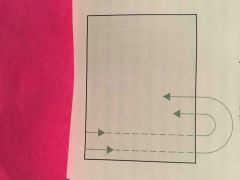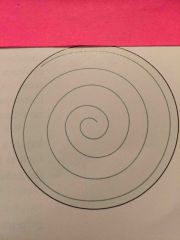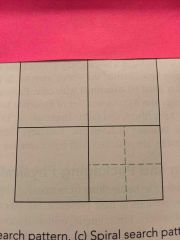![]()
![]()
![]()
Use LEFT and RIGHT arrow keys to navigate between flashcards;
Use UP and DOWN arrow keys to flip the card;
H to show hint;
A reads text to speech;
37 Cards in this Set
- Front
- Back
|
Physical Evidence |
Any object that can establish a crime has or has not been committed or can link a crime and its victim or its perpetrator |
|
|
1st Responder |
Arrives on the scene and is responsible for preserving and protecting it. Special note should be taken of people or vehicles leaving the scene. First priority is obtaining medical assistance for victims and making any arrests. Direct medical assistance by a route that will cause the least disturbance of evidence. Must exclude all unauthorized personnel, record victim's condition and statements. |
|
|
Lead Investigator |
Determines boundary of the scene, perp's path of entry and exit. Does an initial walk through to develop a strategy for examining and documenting the scene. |
|
|
Should the body be moved? |
Absolutely not |
|
|
3 Methods of Recording a Crime Scene |
Notes Sketches Photographs |
|
|
Notes |
Start by identifying the person who contacted the investigator, time of contact and any preliminary info. Record date and time of arrival of the lead investigator, who is present and identity of all personnel (names, titles and arrival time). Keep a record of personnel movements in and out of the scene. Done in ink. Describe all evidence, state of body, and identification of victim |
|
|
Photograph |
Scene should be photographed as completely as possible. Overview of scene, surrounding area, exits and entrances must be taken. All photos have to be taken from various angles. Body must be photographed to show position, location and injuries. If size is significant a ruler must be used. |
|
|
Required Photographs |
Overview, medium range, a close up range and a close up with a ruler. |
|
|
Sketched |
Clearly show layout of a crime scene. Location of evidence possible paths of entry or exit must be shown. |
|
|
Rough Sketch |
A draft representation of all essential information and measurements at a crime scene. Drawn at the scene. Includes distance of items, compass and legend. |
|
|
Finished Sketch |
A precise rendering of the crime scene, usually drawn to scale. Uses computer programming |
|
|
Locating Physical Evidence |
Hair, fibers, blood, weapons, casings, bullets, paint, broken glass and latent fingerprints etc. |
|
|
Collecting Physical Evidence |
Each clothing item should be handled carefully and wrapped separately. Critical areas of the scene should be vacuumed and the sweepings submitted. Fingernail clippings and scrapings are taken. Medical examiner determines manner and cause of death. Tissues and organs go to pathology |
|
|
Handling Evidence |
Want to avoid contamination, breakage, evaporation, scratching and bending. All changes the evidence. Latex gloves or disposable forceps must be used. Evidence cannot be used until it is documented. |
|
|
Paint Cans |
Charred debris, explosives or anything with accelerants. |
|
|
Plastic Tube |
Shards or anything sharp |
|
|
Manilla Envelope |
Hair, fibers, drugs, plastic tubes or biological evidence. |
|
|
Plastic Bags |
Drugs, paint chips |
|
|
Pill bottles |
Hair, fibers or drugs |
|
|
Glass Vials |
Liquids |
|
|
Paper Bag |
Biological evidence |
|
|
Why doe biological evidence go into a manilla envelope or paper bag? |
Circulates air to prevent the growth of mold and mildew. Must be dried before placed inside. |
|
|
Why shouldn't regular envelopes be used? |
Fine particles can leak out of the corners |
|
|
Collecting biological evidence |
Only use disposable tools. Must be dried and a biohazard sticker must go on the bag and the property receipt. Blood, saliva or semen. |
|
|
Collecting DNA Evidence |
Collector must wear a face mask to prevent contamination. Must also wear a lab coat and gloves and work with disposable forceps. |
|
|
Chain of Custody |
A list of all people who came into possession of an item of evidence. A poor COC leads to serious questions about the integrity of the evidence. When packaged it must be initialed and dated. COC has initials, location and date of collection. |
|
|
Should the original seal on evidence be broken? |
Not if it can be avoided. Reseal and sign and date the new evidence tape. |
|
|
Standard Sample |
Physical evidence whose origin is known that can be compared to crime-scene evidence |
|
|
Buccal Swab |
A swab of the inner portion of the cheek |
|
|
Substrate Control |
Uncontaminated surface material close to an area where physical evidence has been deposited to ensure that the surface on which a sample has been deposited does not interfere with lab tests. |
|
|
Evidence Submission to Lab |
Submitted by either personal delivery or mail shipment. |
|
|
Evidence Submission Form |
Form contains: crime, victim, submitting agency, brief history of the case, items, and tests to be run. Lab personnel has final say on tests run. |
|

|
Grid search. 2 investigators. Very thorough but boundaries must be well established |
|

|
Strip/Line. 1-2 investigators. Best used with well defined boundaries |
|

|
Spiral. One person moves in an inward or outward spiral. Evidence can be easily missed |
|

|
Ray. Several people. Not a great method because area between rays is missed |
|

|
Quadrant. Divided scene into sections and a member is assigned to one area. Best suited for a large scene |

